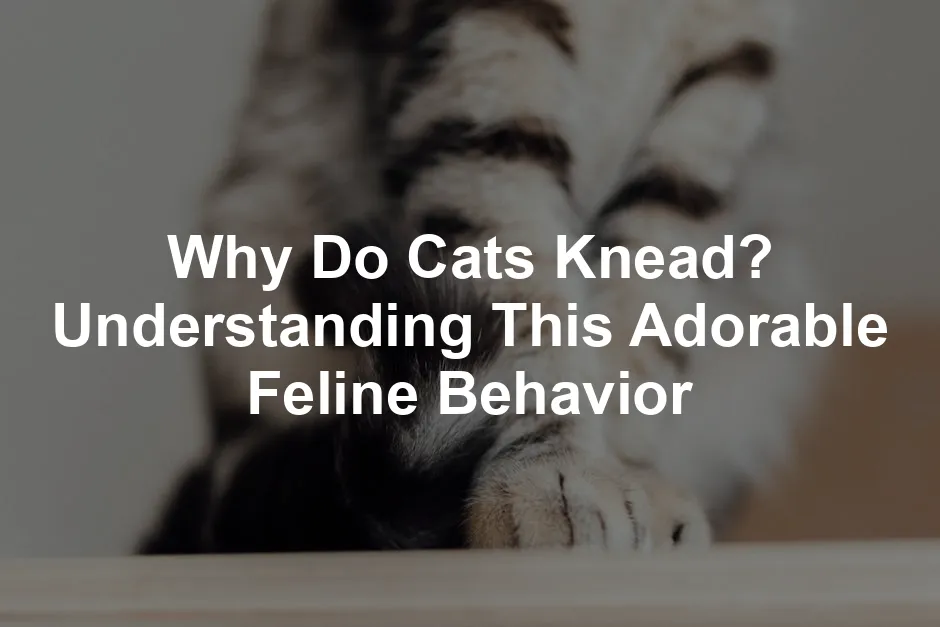
Why Do Cats Knead? Understanding This Adorable Feline Behavior
Introduction
Kneading is one of those quirky behaviors that leave cat owners both amused and puzzled. Imagine your cat rhythmically pushing its paws into your lap or a soft blanket, making movements reminiscent of a baker kneading dough—hence the charming nickname “making biscuits.” But why do cats engage in this endearing act? This article unpacks the fascinating reasons behind kneading, exploring its origins, implications, and what it reveals about your cat’s emotional state.
Kittens start kneading as early as nursing time, stimulating milk flow from their mothers. This instinctual action creates a comforting association with their early life. As cats grow, this behavior often continues, forming a delightful part of their personality. Whether you’re a seasoned cat parent or a curious onlooker, understanding this behavior not only strengthens your bond with your feline friend but also unravels a bit of the mystery behind their charming antics.
So, the next time your cat hops onto your lap, purring away while making those rhythmic paw movements, remember: they’re not just being cute. They’re expressing a blend of affection, comfort, and perhaps a hint of nostalgia for simpler times when all they had to worry about was finding the perfect spot for a nap.
Get ready to dive into the heartwarming world of kneading and discover why your cat might just be the ultimate comfort connoisseur! And speaking of comfort, consider getting your feline friend a Cat Bed. It’s like their personal cloud where they can dream of chasing laser pointers and the elusive red dot!
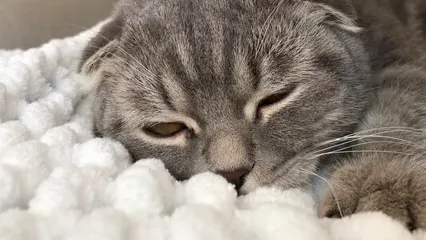
Summary of Key Points
Kneading is a common behavior seen in cats, often linked to their early life experiences. From the moment they are born, kittens knead their mother’s belly to stimulate milk flow, creating a comforting association with this action. This instinctual behavior continues into adulthood, serving various purposes:
- Instinctual Behavior: Kneading is a remnant of kittenhood, promoting comfort and security as it mimics nursing.
- Territorial Marking: Cats have scent glands in their paws, and kneading allows them to mark their territory, claiming ownership over surfaces or people.
- Comfort and Affection: Kneading indicates that a cat feels relaxed and happy, often expressing their bond with a human or a favorite blanket.
- Preparation for Rest: Much like their wild ancestors, cats knead to create a comfortable sleeping area, reminiscent of their instinct to pat down grass or bedding.
- Stress Relief: Some cats knead to self-soothe when anxious or uncomfortable, making it important to monitor any changes in this behavior.
Understanding why cats knead can significantly enhance your relationship with them. It’s essential to appreciate this behavior while ensuring it remains a pleasant experience for both you and your feline friend. If your cat loves to knead, consider treating them with some Cat Treats to reward their biscuit-making skills!
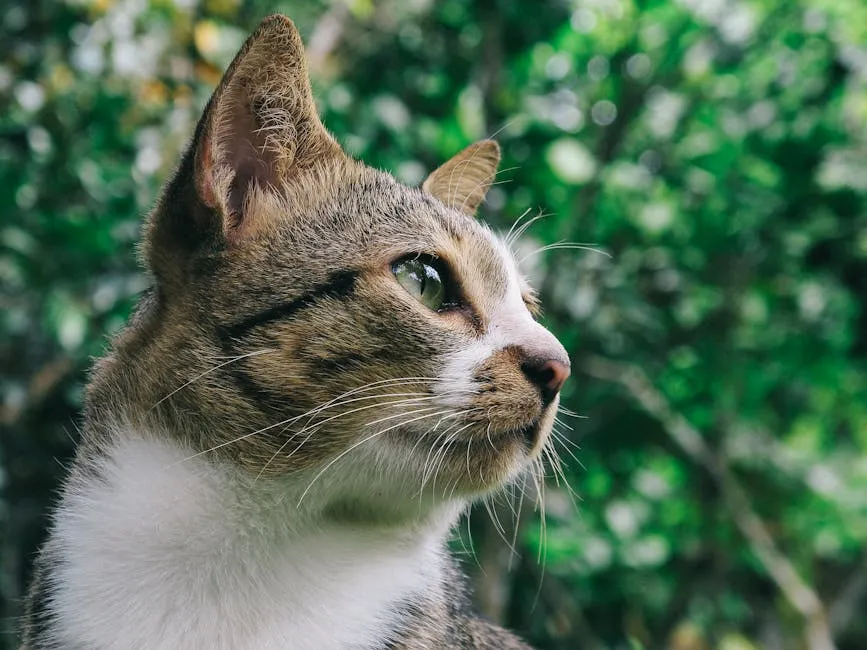
Why Do Cats Knead?
The Origins of Kneading Behavior
Kneading has deep roots in a cat’s early life. Right from kittenhood, they knead their mother’s belly while nursing. This action stimulates milk flow, creating a cozy bond during those tender moments. It’s like their first taste of comfort food, just without the calories! Researchers suggest that kneading also releases oxytocin, known as the “love hormone.” This feel-good chemical fosters bonding and a sense of security.
As cats grow, they carry this behavior into adulthood—a charming reminder of their youthful days. Wild ancestors likely did the same, kneading soft grasses to create nests. So, when your fluffy friend starts kneading your lap, they might just be channeling their inner wild cat, looking for the perfect spot to settle down!

Kneading as a Sign of Comfort and Affection
When your cat kneads, it’s like they’re giving you a warm, fuzzy hug. Kneading is a clear indicator that your feline is feeling happy and relaxed. Imagine your cat curling up on your lap, rhythmically pressing their paws into you like a tiny massager. It’s their way of saying, “I love you, and this is my happy place!”
Take, for instance, a story of a cat named Whiskers. Whenever Whiskers jumped onto his human’s lap, he would knead enthusiastically while purring like a fuzzy engine. His owner would chuckle and pet him, feeling the love radiate. This delightful display shows that your cat considers you a source of comfort and safety. To enhance this comforting environment, consider adding a Cat Grooming Brush to your routine. It’s a purr-fect way to bond!
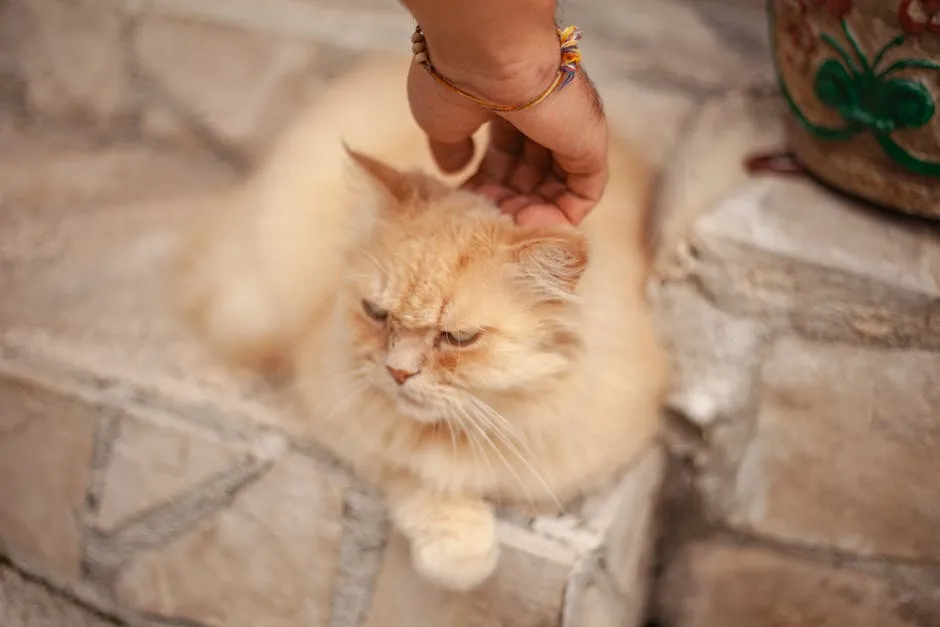
Kneading and Territory
Kneading is not just about comfort; it also doubles as a territory marker. Cats have scent glands in their paws, and when they knead, they leave behind a sprinkle of their unique scent. Think of it as their way of claiming you or that favorite blanket as “theirs.”
This territorial behavior can be amusing. Imagine a cat kneading a pillow while you watch TV. They’re not only getting cozy but also declaring, “This is my throne!” So, the next time your cat kneads, remember they’re not just being cute—they’re marking their territory with pride. And if they need a throne to lounge on, check out a Cat Tree Tower for their royal highness!
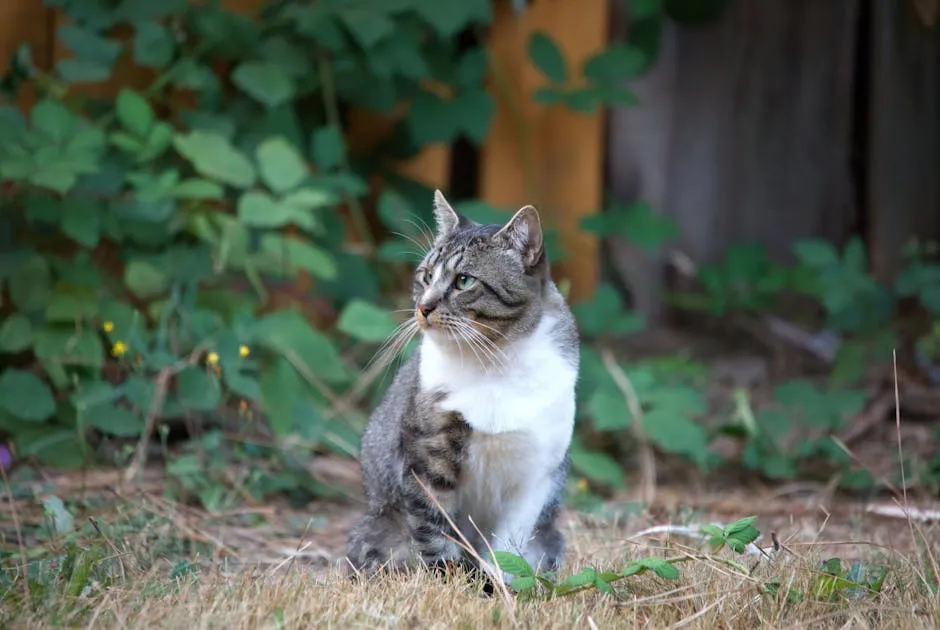
Kneading and Nesting Instincts
The instinct to knead connects to a cat’s nesting behavior. In the wild, cats would knead to create a soft resting space. They would pat down grass or foliage to prepare for a cozy nap. This behavior serves a practical purpose: making a safe haven for rest.
When your kitty kneads on your bed or favorite blanket, they’re channeling their ancestors’ wisdom. It’s their way of ensuring that their resting place is as comfy as possible. It’s like a tiny feline home improvement project, all in the name of comfort. To make their resting area even cozier, consider a Cat Blanket!
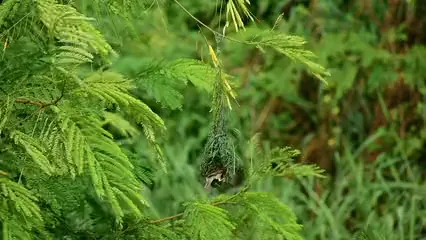
Stress and Anxiety Relief
Sometimes, kneading isn’t just about comfort and affection. For some cats, it becomes a coping mechanism for stress or anxiety. If your cat starts kneading excessively or with a different intensity, it might signal that they’re feeling uneasy.
Cats are sensitive creatures, and changes in their environment can trigger this behavior. A new pet, moving furniture, or even a change in routine can lead to increased kneading. If you notice this shift, it’s essential to monitor their behavior closely. Providing a calm environment and engaging with them can help soothe their nerves. To help with that, consider using a Feliway Classic Pheromone Diffuser to create a calming atmosphere!
In conclusion, kneading is a fascinating blend of instinct, affection, and reassurance. Understanding why cats knead enriches your relationship with these adorable companions. It’s a reminder that beneath their playful antics lies a deep emotional life, just waiting to be appreciated. So, the next time your cat gets their kneading game on, take a moment to enjoy the warmth of their love and the delightful quirks that make them uniquely feline.
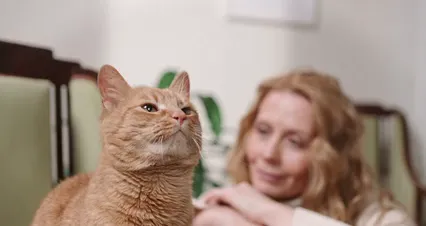
Should You Be Concerned About Kneading?
Normal vs. Compulsive Kneading
Kneading is a delightful sight. Most cats knead when they feel cozy and safe. They instinctively press their paws against soft surfaces, almost like they’re making biscuits. This is normal behavior, reflecting their comfort from kittenhood. However, not all kneading is created equal.
Compulsive kneading, on the other hand, can indicate stress or anxiety. If your cat kneads excessively, it may be a sign that something is amiss. Look for signs of distress, such as excessive vocalization, restlessness, or changes in appetite. If your kitty is kneading so much that it seems more like a nervous tick than a cozy ritual, it’s essential to take note.
Cats may also knead to self-soothe when they’re feeling uncomfortable. For example, if your cat has recently experienced a change in their environment, like a new pet or moving furniture, they may resort to excessive kneading. It’s their way of coping with the new stressors in their lives. So, keep an eye out for these signs, as they can guide you in understanding your feline friend better. A Pet First Aid Kit can be handy to have around in case of emergencies!

When to Consult a Veterinarian
If you notice your cat’s kneading becoming more compulsive, it may be time to consult a veterinarian. A medical professional can help determine if there are any underlying health issues contributing to this behavior. Conditions like arthritis can cause discomfort, leading to excessive kneading as a way to relieve muscle tension.
Additionally, behavioral issues can arise from stress or anxiety. If your cat’s kneading seems linked to a recent traumatic experience, such as a move or loss of a companion, speaking with a vet can provide insight. They may recommend behavioral therapy or calming products like pheromone diffusers to help ease your cat’s anxiety. For those unexpected moments, a Cat Carrier is essential for safe travels!
Don’t wait too long to seek help. Changes in behavior can sometimes indicate more serious health concerns. A thorough examination can rule out any physical ailments and provide you with peace of mind.
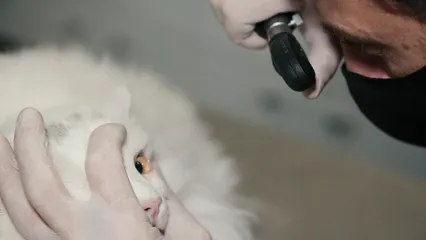
Tips for Managing Kneading Behavior
Managing a cat’s kneading behavior can be both fun and practical. Here are some tips to help keep the kneading experience comfortable for both you and your feline friend.
First, consider keeping your cat’s claws trimmed. Long claws can lead to scratching, especially during enthusiastic kneading sessions. Regular nail trimming can prevent discomfort for both you and your furniture. A good pair of Cat Nail Clippers can make this chore much easier!
Next, provide a designated kneading area. Cats love soft surfaces, so consider placing a blanket or a special pillow in a cozy spot. This way, your cat can knead to their heart’s content without leaving you with sore legs.
Positive reinforcement is crucial. If your cat kneads on the designated spot, reward them with treats or affection. This encourages them to continue using the appropriate area. On the flip side, avoid punishing them for kneading, as this may increase anxiety.
Finally, create a calm environment. Reducing stressors, such as loud noises or sudden changes, can help your cat feel more secure. A relaxed cat is less likely to knead excessively. You might also consider a Cat Odor Eliminator to keep the environment fresh!
In conclusion, while kneading is mostly harmless, understanding the nuances of this behavior is essential. By monitoring your cat’s actions and providing the right management techniques, you can ensure that kneading remains a comforting and enjoyable experience for both of you.
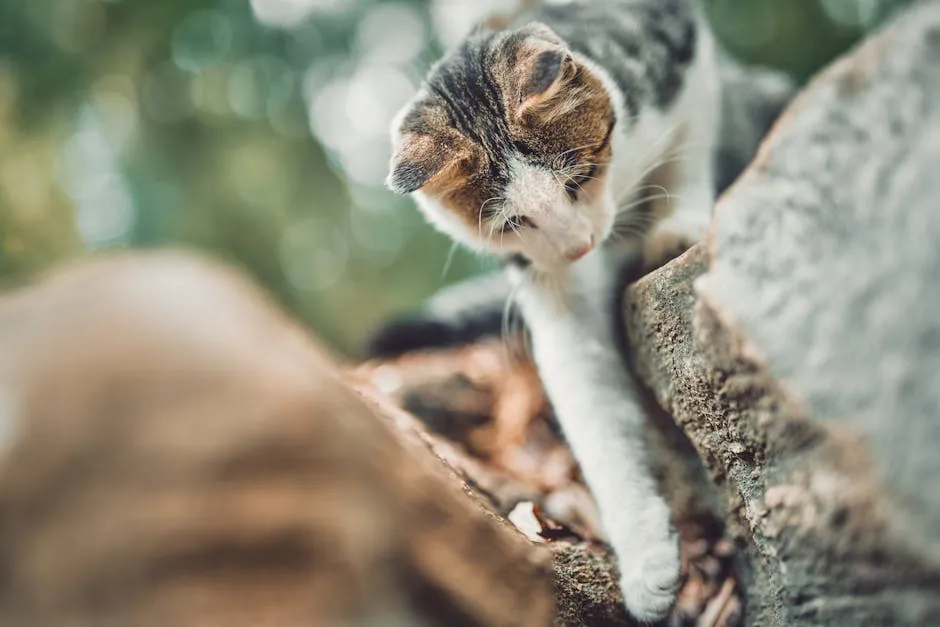
Conclusion
In conclusion, kneading is a delightful behavior that reveals a lot about a cat’s emotional state. It’s not just a random act; it often signifies comfort, affection, and security. When cats knead, they’re channeling their inner cuddly kitten, reminiscing about the happiness of nursing from their mothers. This endearing activity can also serve practical purposes, like marking territory or preparing a cozy spot for a nap.
Understanding the reasons behind kneading can transform your relationship with your feline friend. It allows you to appreciate their quirks and realize that this behavior is a sign of their contentment. So, when your cat begins to knead away, embrace it! It’s their way of saying, “I feel safe and loved here.” And if you want to make their kneading experience even better, consider a Cat Scratching Post for them to enjoy!
With this knowledge, you can create a nurturing environment that enhances your cat’s happiness while ensuring your comfort too. If kneading becomes excessive or seems linked to anxiety, consider consulting a veterinarian for guidance. But overall, kneading is a charming reminder of the bond you share with your furry companion. Enjoy those biscuit-making sessions! They might just be the cutest thing your cat does all day.
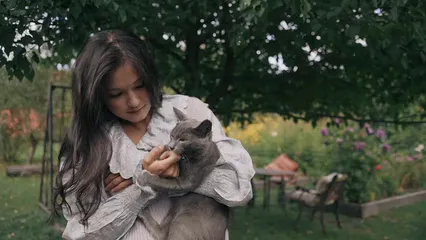
FAQs
What does it mean when my cat kneads on me?
When your cat kneads on you, it’s a delightful show of affection. Imagine your feline friend, eyes half-closed, rhythmically pressing their paws into your lap. This behavior often signifies comfort and happiness. Just like a child feels safe in a warm hug, your cat finds solace in kneading. Kneading is a remnant of kittenhood. Kittens knead their mother’s belly to stimulate milk flow. That comforting association lingers into adulthood. So, when your cat kneads you, they’re channeling those warm, fuzzy feelings from their early days. It’s their way of saying, “You’re my person, and I’m super comfy right now!”
Can all cats knead, or is it just a trait of certain breeds?
Kneading isn’t exclusive to certain cat breeds; it’s a widespread behavior among felines. Most cats, regardless of their breed, will knead at some point in their lives. This behavior transcends breed lines, echoing a shared instinctual past. While all cats can knead, the frequency and style may vary. Some cats might knead vigorously, while others prefer a gentle touch. Breeds like Siamese or Ragdolls may knead more often, but that’s more about personality than genetics. So, whether you have a sassy Maine Coon or a chill British Shorthair, expect some biscuit-making action!
Why do some cats knead more than others?
Several factors influence how often your cat kneads. First, their personality plays a significant role. Cats that are generally more affectionate tend to knead more frequently. If your cat enjoys cuddling and seeks your company, they’re likely to be a knee-dedicated companion. Environmental factors also contribute. Stressful changes, like moving or new pets, can increase kneading as a coping mechanism. A cat might knead more intensely if they feel uneasy. Additionally, age can affect this behavior. Older cats may knead less due to physical limitations or changing comfort levels. Ultimately, every kitty has their unique kneading style, shaped by their experiences and environment.
What can I do if my cat’s kneading is painful?
If your cat’s kneading leaves you feeling like a pin cushion, don’t fret! There are several ways to manage this behavior while keeping your furry friend happy. First, try placing a thick blanket or pillow on your lap during cuddle time. This creates a soft barrier that can help minimize discomfort. Regularly trimming your cat’s claws is another smart move. Keeping those claws short can prevent accidental scratches during enthusiastic kneading sessions. You can also redirect their kneading behavior. If your cat starts kneading on you, gently guide them to a designated blanket or soft toy. Encouraging them to knead appropriate items can help preserve your legs while still allowing them to express their love.
Is it normal for a cat to suckle while kneading?
Yes, it’s quite normal! When cats knead, some may also suckle on blankets or even your clothing. This behavior is linked to their nursing days. Kittens suckle while kneading to stimulate milk flow. For adult cats, this behavior often resurfaces when they’re feeling exceptionally relaxed or nostalgic. Suckling while kneading can indicate comfort and security. It’s a way for your cat to reconnect with those warm, tender memories of their kittenhood. While it may seem odd, it’s just another charming quirk that highlights the bond between you and your feline friend. So, if your cat decides to suckle while kneading, enjoy this sweet throwback to their early days!
Kneading can also serve as a form of stress relief for cats, helping them cope with anxiety and discomfort.
Please let us know what you think about our content by leaving a comment down below!
Thank you for reading till here 🙂
All images from Pexels




